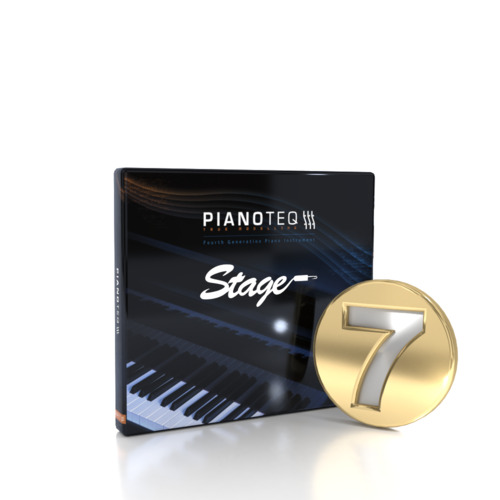

- #Eastwest pianos vs pianoteq 6 how to#
- #Eastwest pianos vs pianoteq 6 full#
- #Eastwest pianos vs pianoteq 6 free#
Recordings from MIDI files provide high-quality listening enjoyment and are simple to produce. The sound feels full, well-defined and is rich in resonances. The sound becomes audible just barely after hitting the key. So this is what this article is about: where can one get “the best bang for the buck”?Įxcellent real-time execution in daily piano practice or stage performance. In my estimation today, at the onset of 2018, a person breaking into music can fully expect to produce an enjoyable “concert hall” sound – all at a most reasonable cost. Suddenly, high-quality virtual pianos seem to have become possible when before they were just a dream. And the cost of acquisition is dropping fast. Resonance from other strings in the piano is now part of sophisticated virtual piano sound and remains “in the air” after hitting the keys.

Extremes in tonal range are handled much better. Keyboard response times have been much reduced. The acoustic quality of virtual pianos is rapidly closing in on that of acoustic pianos. The offerings of much better solutions multiplied. Recent changesĪbout two years ago, things began to change. Soon I had spent well over 1000 Euros, and I was still far away from my dream of creating a truly satisfactory virtual piano. Whenever I returned from the conservatory with their wonderful acoustic grand pianos (Steinways, Yamahas, etc.), I was confronted by the major deficiencies in my struggling home setup. Sound reproduction tended to be poor in the extremes of the dynamic range, and in real-time practice, time delays between hitting the keys and sound reproduction felt annoying – even after time optimization of the MIDI and audio links (e.g. With many products the sound still appeared shallow and ill-defined to my ears, although I used excellent ear phones, bought at the time for some 700 Euros. I am very picky about the acoustics of a piano and about what my virtual piano should do. I bought one such product after another, with clenched teeth. Major side benefit: neither neighbours nor family members would be disturbed, or possibly pained, by your attempts to learn the piano. For a few hundred dollars or Euros, one could buy a programme, plug in an electric piano keyboard (another few hundred dollars), put on some expensive earphones, and off you were: your computer would become a fairly good-sounding piano. Starting about 2010, products appeared on the market that seemed to be able to do the job. The searchīut might a commercial offering do the job?
#Eastwest pianos vs pianoteq 6 full#
Although soundfonts could be used in piano learning, composition work or for reading music, they were incapable of the full breadth of piano expression. Given the technical limitations of computers and soundfonts at the time, such programs could not yet replace the acoustic piano. They did not capture the resonances of an acoustic piano. They did not adapt well to different modes of expression: slow, fast, sustained, soft, forte, etc. They sounded “too shallow” or “too robotic”.
#Eastwest pianos vs pianoteq 6 free#
Although slowly improving in quality, free soundfonts were still too inflexible for concert hall-type sound reproduction. Just a few years ago, I found that free or inexpensive offerings were still inadequate. Which virtual piano can give the greatest satisfaction in daily piano practice, in stage performance or in production-level performance?
#Eastwest pianos vs pianoteq 6 how to#
It includes chord identification, and the tuning section has become even more advanced with new tools.I've wanted to do this experiment for a long time.įor many years I have been wondering how to create a piano on my computer.

Pianoteq 6 facilitates your workflow by adding compatibility with the VST3 format and the ARM architecture (Linux version only, for example on Raspberry Pi 3 boards). Increased compatibility and extra features These magnificent virtual grand pianos will appeal to all musicians in search of the most famous piano sound signature. Steinway & Sons have approved the sound and playability of the Pianoteq virtual instruments Steinway Model D and Steinway Model B, which have gained from the refined physical model. Pianoteq becomes, more than ever, an immense joy to play. Pianoteq 6 brings numerous refinements in its engine and physical model, increasing realism and acoustic presence on all its instruments: acoustic pianos, electro-acoustic pianos, historical instruments and chromatic percussion.


 0 kommentar(er)
0 kommentar(er)
